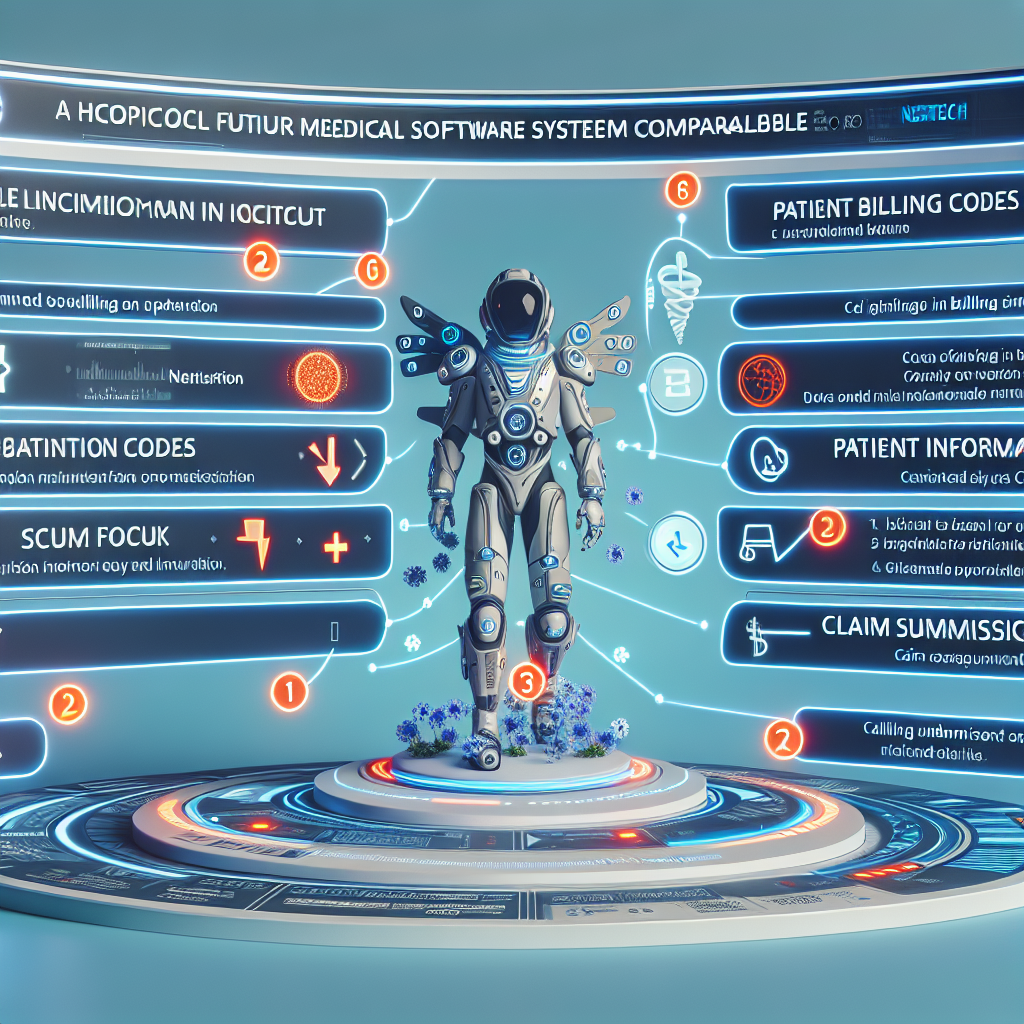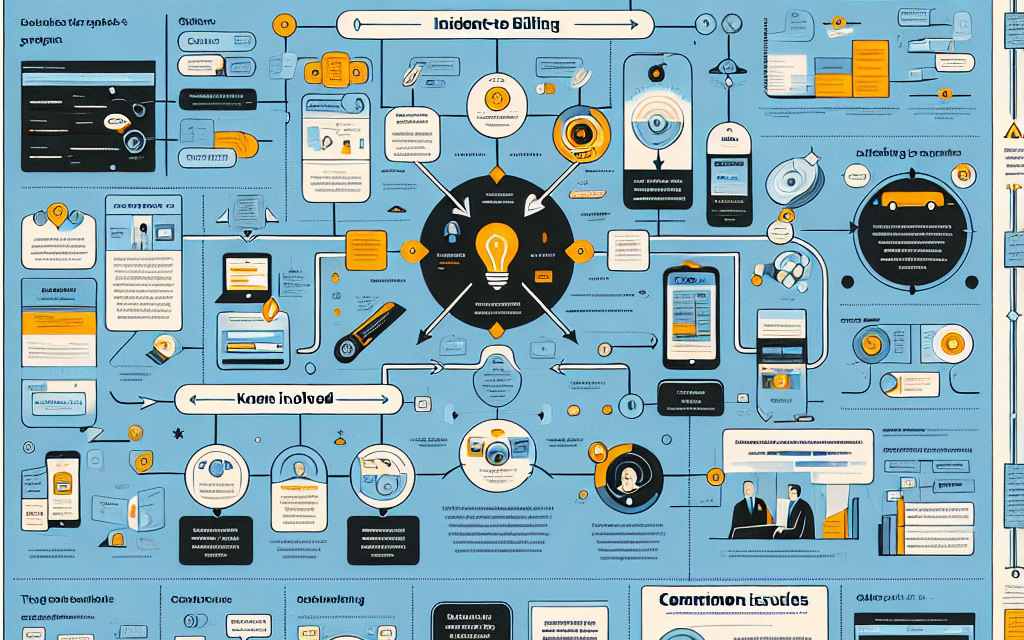Comprehensive Guide to Incident-to Billing in Nextech

Incident-to billing is a crucial aspect of healthcare management, particularly for practices that aim to maximize their revenue while ensuring compliance with Medicare regulations. Nextech, a leading provider of healthcare technology solutions, offers robust tools to facilitate incident-to billing. This comprehensive guide delves into the intricacies of incident-to billing within the Nextech platform, providing healthcare professionals with the knowledge and tools they need to optimize their billing processes.
Understanding Incident-to Billing
Incident-to billing is a Medicare provision that allows services provided by non-physician practitioners (NPPs) to be billed under a supervising physician’s National Provider Identifier (NPI) number. This can result in higher reimbursement rates, as services billed under a physician’s NPI are typically reimbursed at 100% of the Medicare Physician Fee Schedule, compared to 85% when billed under an NPP’s NPI.
To qualify for incident-to billing, several criteria must be met. The service must be part of the patient’s normal course of treatment, during which a physician personally performed an initial service and remains actively involved in the patient’s care. Additionally, the physician must be present in the office suite and immediately available to provide assistance and direction throughout the service.
Understanding these requirements is essential for healthcare providers to ensure compliance and avoid potential audits or penalties. Nextech’s platform is designed to streamline the incident-to billing process, making it easier for practices to adhere to these guidelines.
Key Requirements for Incident-to Billing
To effectively utilize incident-to billing, healthcare providers must adhere to specific requirements set forth by Medicare. These requirements ensure that the services provided are eligible for full reimbursement under the supervising physician’s NPI.
- Physician’s Initial Involvement: The physician must have personally performed an initial service and established a treatment plan for the patient. This initial involvement is crucial for subsequent services to qualify as incident-to.
- Active Participation: The physician must remain actively involved in the patient’s care, providing ongoing supervision and direction. This includes being available to intervene if necessary during the provision of services by NPPs.
- Location Requirements: The physician must be physically present in the office suite and immediately available to provide assistance. This does not mean the physician must be in the same room, but they must be on-site and accessible.
- Non-Physician Practitioners: Services can be provided by NPPs such as nurse practitioners, physician assistants, or clinical nurse specialists, as long as they are within the scope of their practice and under the supervision of a physician.
- Documentation: Proper documentation is essential to support incident-to billing. This includes detailed records of the physician’s initial involvement, ongoing supervision, and the services provided by NPPs.
By understanding and adhering to these requirements, healthcare providers can effectively utilize incident-to billing to maximize their reimbursement rates while ensuring compliance with Medicare regulations.
Nextech’s Role in Streamlining Incident-to Billing
Nextech is a leading provider of healthcare technology solutions, offering a comprehensive platform that streamlines various aspects of practice management, including incident-to billing. With its user-friendly interface and robust features, Nextech simplifies the billing process, allowing healthcare providers to focus on delivering quality care to their patients.
One of the key features of Nextech’s platform is its ability to automate and streamline the documentation process. By integrating electronic health records (EHR) with billing functionalities, Nextech ensures that all necessary documentation is captured accurately and efficiently. This not only reduces the administrative burden on healthcare providers but also minimizes the risk of errors or omissions that could lead to denied claims or audits.
Features of Nextech’s Incident-to Billing Module
Nextech’s incident-to billing module is designed to facilitate compliance with Medicare regulations while maximizing reimbursement rates. Some of the key features of this module include:
- Automated Documentation: Nextech’s platform automates the documentation process, ensuring that all necessary information is captured accurately and efficiently. This includes the physician’s initial involvement, ongoing supervision, and the services provided by NPPs.
- Real-Time Eligibility Verification: Nextech’s platform includes real-time eligibility verification, allowing healthcare providers to confirm a patient’s insurance coverage and eligibility for incident-to billing before services are rendered.
- Customizable Templates: Nextech offers customizable templates for documenting incident-to services, allowing healthcare providers to tailor the documentation process to their specific needs and preferences.
- Comprehensive Reporting: Nextech’s platform includes comprehensive reporting capabilities, providing healthcare providers with insights into their billing processes and helping them identify areas for improvement.
- Integration with EHR: Nextech’s incident-to billing module is fully integrated with its EHR system, ensuring seamless data flow and reducing the risk of errors or omissions.
By leveraging these features, healthcare providers can streamline their incident-to billing processes, reduce administrative burdens, and maximize their reimbursement rates.
Best Practices for Implementing Incident-to Billing in Nextech
Implementing incident-to billing in Nextech requires careful planning and adherence to best practices to ensure compliance and maximize reimbursement rates. By following these best practices, healthcare providers can optimize their billing processes and improve their financial performance.
Establish Clear Protocols and Procedures
One of the first steps in implementing incident-to billing in Nextech is to establish clear protocols and procedures for documenting and billing services. This includes defining the roles and responsibilities of physicians and NPPs, as well as outlining the documentation requirements for each service.
Healthcare providers should also establish protocols for verifying patient eligibility and insurance coverage before services are rendered. This can help prevent denied claims and ensure that services are billed correctly under the supervising physician’s NPI.
Train Staff on Nextech’s Platform
Proper training is essential for successfully implementing incident-to billing in Nextech. Healthcare providers should ensure that all staff members involved in the billing process are familiar with Nextech’s platform and understand how to use its features effectively.
This includes training staff on how to use Nextech’s automated documentation tools, real-time eligibility verification, and customizable templates. By providing comprehensive training, healthcare providers can ensure that their staff is equipped to handle incident-to billing efficiently and accurately.
Monitor Compliance and Performance
Regular monitoring of compliance and performance is crucial for optimizing incident-to billing processes. Healthcare providers should regularly review their billing practices to ensure compliance with Medicare regulations and identify any areas for improvement.
Nextech’s comprehensive reporting capabilities can provide valuable insights into billing performance, allowing healthcare providers to track key metrics such as reimbursement rates, denied claims, and documentation accuracy. By monitoring these metrics, providers can identify trends and make data-driven decisions to improve their billing processes.
Conduct Regular Audits
Conducting regular audits is an essential component of maintaining compliance with incident-to billing requirements. Audits can help identify any discrepancies or errors in documentation and billing practices, allowing healthcare providers to address issues before they result in denied claims or audits.
Healthcare providers should establish a regular audit schedule and ensure that all staff members are aware of the audit process. By conducting thorough audits, providers can ensure that their incident-to billing practices are compliant and optimized for maximum reimbursement.
Stay Informed of Regulatory Changes
The healthcare industry is constantly evolving, with new regulations and guidelines being introduced regularly. Healthcare providers must stay informed of any changes to incident-to billing requirements to ensure ongoing compliance.
Nextech provides resources and support to help healthcare providers stay up-to-date with regulatory changes. By leveraging these resources, providers can ensure that their incident-to billing practices remain compliant and optimized for maximum reimbursement.
Case Studies: Successful Implementation of Incident-to Billing in Nextech
To illustrate the effectiveness of Nextech’s incident-to billing module, let’s explore some case studies of healthcare practices that have successfully implemented this feature and achieved significant improvements in their billing processes.
Case Study 1: A Multi-Specialty Clinic
A multi-specialty clinic with a diverse team of physicians and NPPs faced challenges in managing their incident-to billing processes. The clinic struggled with documentation errors, denied claims, and compliance issues, resulting in lost revenue and increased administrative burdens.
By implementing Nextech’s incident-to billing module, the clinic was able to streamline its documentation processes and improve compliance with Medicare regulations. The automated documentation tools and real-time eligibility verification features helped reduce errors and ensure accurate billing.
As a result, the clinic experienced a significant increase in reimbursement rates and a reduction in denied claims. The comprehensive reporting capabilities also provided valuable insights into the clinic’s billing performance, allowing them to identify areas for improvement and optimize their processes further.
Case Study 2: A Dermatology Practice
A dermatology practice with a high volume of patients sought to improve its incident-to billing processes to maximize revenue and reduce administrative burdens. The practice faced challenges in managing documentation and ensuring compliance with Medicare regulations.
By leveraging Nextech’s customizable templates and integration with EHR, the practice was able to streamline its documentation processes and ensure accurate billing. The automated documentation tools helped reduce errors and improve compliance, resulting in higher reimbursement rates.
The practice also benefited from Nextech’s comprehensive reporting capabilities, which provided insights into their billing performance and helped identify areas for improvement. As a result, the practice was able to optimize its incident-to billing processes and achieve significant improvements in its financial performance.
Case Study 3: A Family Medicine Practice
A family medicine practice with a team of physicians and NPPs faced challenges in managing its incident-to billing processes. The practice struggled with documentation errors and compliance issues, resulting in denied claims and lost revenue.
By implementing Nextech’s incident-to billing module, the practice was able to streamline its documentation processes and improve compliance with Medicare regulations. The automated documentation tools and real-time eligibility verification features helped reduce errors and ensure accurate billing.
As a result, the practice experienced a significant increase in reimbursement rates and a reduction in denied claims. The comprehensive reporting capabilities also provided valuable insights into the practice’s billing performance, allowing them to identify areas for improvement and optimize their processes further.
Case Study 4: An Orthopedic Practice
An orthopedic practice with a team of physicians and NPPs sought to improve its incident-to billing processes to maximize revenue and reduce administrative burdens. The practice faced challenges in managing documentation and ensuring compliance with Medicare regulations.
By leveraging Nextech’s customizable templates and integration with EHR, the practice was able to streamline its documentation processes and ensure accurate billing. The automated documentation tools helped reduce errors and improve compliance, resulting in higher reimbursement rates.
The practice also benefited from Nextech’s comprehensive reporting capabilities, which provided insights into their billing performance and helped identify areas for improvement. As a result, the practice was able to optimize its incident-to billing processes and achieve significant improvements in its financial performance.
Case Study 5: A Pediatric Practice
A pediatric practice with a high volume of patients sought to improve its incident-to billing processes to maximize revenue and reduce administrative burdens. The practice faced challenges in managing documentation and ensuring compliance with Medicare regulations.
By implementing Nextech’s incident-to billing module, the practice was able to streamline its documentation processes and improve compliance with Medicare regulations. The automated documentation tools and real-time eligibility verification features helped reduce errors and ensure accurate billing.
As a result, the practice experienced a significant increase in reimbursement rates and a reduction in denied claims. The comprehensive reporting capabilities also provided valuable insights into the practice’s billing performance, allowing them to identify areas for improvement and optimize their processes further.
Conclusion
Incident-to billing is a valuable tool for healthcare providers seeking to maximize their reimbursement rates while ensuring compliance with Medicare regulations. Nextech’s comprehensive platform offers robust features that streamline the incident-to billing process, making it easier for practices to adhere to these guidelines and optimize their billing processes.
By understanding the key requirements for incident-to billing, leveraging Nextech’s features, and implementing best practices, healthcare providers can achieve significant improvements in their billing performance. The case studies presented in this guide illustrate the effectiveness of Nextech’s incident-to billing module in helping practices streamline their processes, reduce administrative burdens, and maximize revenue.
As the healthcare industry continues to evolve, staying informed of regulatory changes and leveraging technology solutions like Nextech will be essential for healthcare providers to remain competitive and successful in their billing practices.





